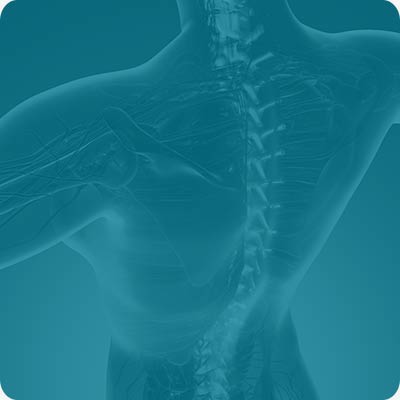
GLOBAL NEURO & SPINE INSTITUTE
OFFERING TREATMENTS FOR
SPINAL CORD STIMULATORS
NERVE BLOCK TREATMENT
SPINE BLOCK TREATMENT
PERIPHERAL NERVE STIMULATORS
MINIMALLY INVASIVE DISCECTOMIES
JOINT INJECTIONS
EPIDURAL STEROID INJECTIONS
PATIENT REVIEWS
“Excellent service, friendly staff”

MEET OUR PROVIDERS
OUR PROFESSIONAL TEAM
REQUEST A
CONSULTATION
We will call you to confirm your appointment.
Welcome to Global Neuro & Spine Institute, Pain Clinic Located in Orlando, Jensen Beach, Malabar Palm Bay, Atlantis, Fort Pierce, Winter Park and Plantation, FL
At Global Neuro & Spine Institute Dr. Michael S. Slobasky, DO, DABPMR, and his team offer a wide range of services including spinal cord stimulators, nerve block treatments, spine block treatments, peripheral nerve stimulators, minimally invasive discectomies, joint injections, epidural steroid injections and much more. For more information, please contact us or book an appointment online. We serve patients from Orlando FL, Conway FL, Edgewood FL, Jensen Beach FL, Ocean Breeze FL, Rio FL, Malabar Palm Bay FL, Melbourne FL, Atlantis FL, Palm Springs FL, Boynton Beach FL, Fort Pierce FL, White City FL, St Lucie FL, Plantation FL, Pine Island Ridge FL, Lauderhill FL, Winter Park FL, Bertha FL, Alafaya FL and surrounding areas.
Welcome to Global Neuro & Spine Institute, Pain Clinic Located in Orlando, Jensen Beach, Malabar Palm Bay, Atlantis, Fort Pierce, Winter Park and Plantation, FL
At Global Neuro & Spine Institute Dr. Michael S. Slobasky, DO, DABPMR, and his team offer a wide range of services including spinal cord stimulators, nerve block treatments, spine block treatments, peripheral nerve stimulators, minimally invasive discectomies, joint injections, epidural steroid injections and much more. For more information, please contact us or book an appointment online.
We serve patients from Orlando FL, Conway FL, Edgewood FL, Jensen Beach FL, Ocean Breeze FL, Rio FL, Malabar Palm Bay FL, Melbourne FL, Atlantis FL, Palm Springs FL, Boynton Beach FL, Fort Pierce FL, White City FL, St Lucie FL, Plantation FL, Pine Island Ridge FL, Lauderhill FL, Winter Park FL, Bertha FL, Alafaya FL and surrounding areas.
FEATURED SERVICES
FEATURED SERVICES
5 STAR REVIEWS
“A Professional Place”

MEET OUR TEAM
5 STAR REVIEWS
“A Professional Place”

MEET OUR TEAM
About Us
Global Neuro & Spine Institute physicians are double and triple-board certified, fellowship trained, and remain on the cutting edge of technology. In our practice, we use the most advanced techniques and the highest standards to develop an individualized and comprehensive treatment plan for each of our patients. We are also very proud of our policy to place great importance on educating those we treat, while addressing any questions or concerns that may exist.
Global Neuro & Spine Institute physicians are double and triple-board certified, fellowship trained, and remain on the cutting edge of technology.


About Us
Global Neuro & Spine Institute physicians are double and triple-board certified, fellowship trained, and remain on the cutting edge of technology. In our practice, we use the most advanced techniques and the highest standards to develop an individualized and comprehensive treatment plan for each of our patients. We are also very proud of our policy to place great importance on educating those we treat, while addressing any questions or concerns that may exist.
Global Neuro & Spine Institute physicians are double and triple-board certified, fellowship trained, and remain on the cutting edge of technology.

Global Neuro & Spine Institute in
Atlantis, FL
130 John F Kennedy Dr Ste# 138, Atlantis, FL 33462
Contact Us

Global Neuro & Spine Institute in
Orlando, FL

Global Neuro & Spine Institute in
Winter Park, FL

Global Neuro & Spine Institute in
Fort Pierce, FL

Global Neuro & Spine Institute in
Jensen Beach, FL

Global Neuro & Spine
Institute in Malabar Palm Bay, FL

Global Neuro & Spine Institute in Plantation, FL

Global Neuro & Spine Institute in
Orlando, FL

Global Neuro & Spine Institute in Palm Bay, FL
5200 Babcock St NE, Suite 106A/B Palm Bay, FL 32905
Contact Us

Global Neuro & Spine Institute in
Fort Pierce, FL

Global Neuro & Spine Institute in
Jensen Beach, FL

Global Neuro & Spine Institute in
Atlantis, FL
130 John F Kennedy Dr Ste# 138, Atlantis, FL 33462
Contact Us

Global Neuro & Spine Institute in
Plantation, FL

Global Neuro & Spine Institute in
Winter Park, FL

Global Neuro & Spine Institute
in Malabar Palm Bay, FL
OTHER FEATURED SERVICES
MOST INSURANCES ACCEPTED






MOST INSURANCES ACCEPTED







Ready For A Consultation?

Ready For A Consultation?
PATIENT REVIEWS AND FEEDBACK
PATIENT REVIEWS AND FEEDBACK

“I have been going to prospect Office staff, ease of check-in, tech and doctor were excellent. The technician and doctor explained the procedure and made sure I was comfortable throughout the procedure.”
Cynthia B

“The doctor and staff were helpful, and very accommodating. With the times and days I needed they always scheduled my appointment to meet my needs. The doctor is very gentle, with how they prep you for your procedures”
Vonzell M

“Everyone here is so nice and sweet. Dr. Ali is the best. I bring my mom to her appointments and he is just so patient and funny with her. I would definitely recommend. Service is great!”
Anitha E














